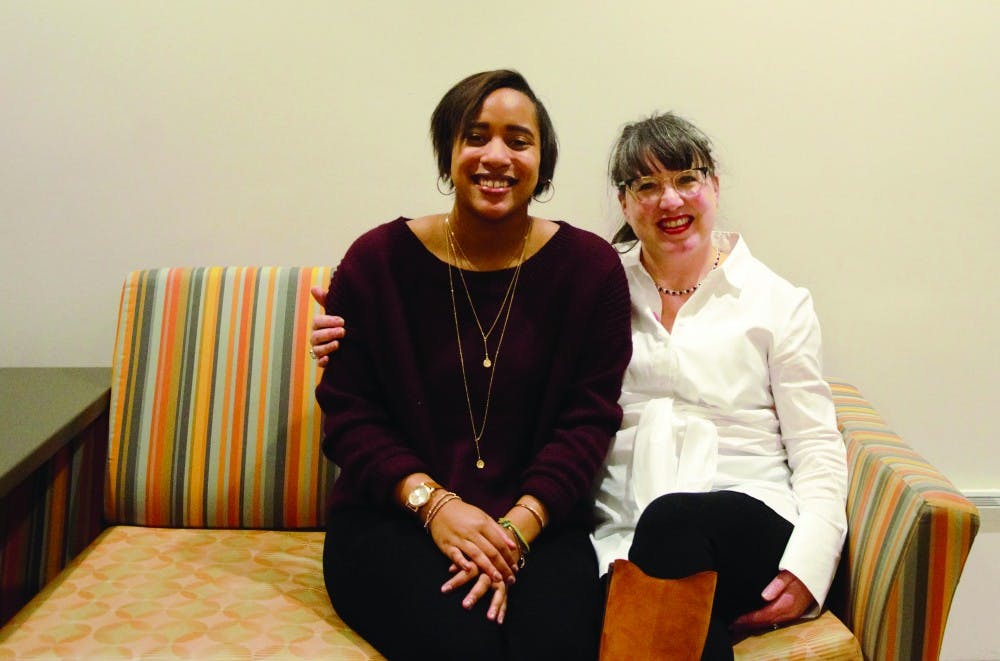Editor's Note: This article has been corrected. The original version said Kristin Cipollone said, "It has perpetuated a very white, middle class that suffers from gender division," and it now says the correct quote, "It has perpetuated a very white, middle class, gender division."
For one student, the story of her childhood academic career is one she said mortifies her. She never quite understood why her poverty was displayed within the bounds of her elementary classrooms. One day, a teacher went as far as putting extra food in her backpack before sending her home because she assumed her parents did not make enough income to feed her family. She said she remembers the humiliation on her mother’s face.
For one professor, racial bias is a factor she said almost derailed her future. While pursuing her master’s degree in college, she encountered a professor who graded her and her Latinx friends harsher than any of the other students, forcing them to redo projects because they didn’t cover topics related to their own ethnicity. As the semester came to a close, the professor suggested she continue her education in a different direction because a master’s degree was not obtainable for “someone like her.”
Similar stories of sadness, isolation and confusion resonate through the Alliance for Marginalized Educators (AME), where students and faculty offer support and condolence to anyone who has experienced personal tragedies within the education system.
“Teacher education has been very complicit in furthering a very exclusive environment — exclusive in terms of race, gender and gender expression, sexual orientation and ability,” said Kristin Cipollone, an AME member and elementary education professor. “It has perpetuated a very white, middle class, gender division.”
AME has worked to become more inclusive within itself over the last four years by changing its name, according to Darolyn Jones, the director of AME and English professor.
In 2014, the group was founded as the Alliance of Black Teachers Club. In 2016, it changed to the Alliance of Black and Latinx Teachers Club. Now, it is the Alliance of Marginalized Educators.
Although the group was created for educators, anyone is welcome to come and share their personal concerns about marginalization within their learning situations. Often times, stories have common themes of isolation, exclusion and unsupportive environments.
For Jones, her story is the reason she started AME and includes all three themes.
While teaching in 2014, Jones said she had three African American students in one of her classes, which was a first because she had never had that much diversity in one class.
These students helped Jones realize the importance of diversity because she said they offered a differentiating opinion to the majority, which led to productive, helpful discussions.
“[These diverse students] are not getting the support that they need, and they are sometimes the only ones of whatever they’re the one of in a classroom, or even on a staff,” Jones said. “It is isolating. People are looking at you, and maybe expecting less or more of you.”
During the 2011-12 school year, 76 percent of public school teachers were female, and of the 64,000 teachers in Indiana that year, 92.6 percent were white, according to two studies by the National Center for Education Statistics.

Source: CBCC; Emily Wright, DN
“This means that [teachers] are teaching most books that they identify with,” Jones said. “So, the kid that is African American doesn’t get to see black characters being taught and never truly gets to see himself. On the other side of things, children that aren’t African American don’t get to learn about these stories from the perspective of an African American character.”
In an attempt to bring this “crisis” to the public eye and create their own reform, Jones said AME is creating a video series of students telling their educational stories. Through this series, the organization hopes to shed light on the issue for the general education field.
“We want the bigger audience, locally and globally, to hear our stories, to understand and say ‘What can we do to change this?’” Jones said.
Next semester, the group plans to speak at various K-12 schools to bring the subject to the attention of both students and teachers within local education establishments.
Additionally, Jones said she hopes to create a list of discussions and prompts teachers can use to think about what they say and do to promote inclusivity and diversity in the classroom.
“We have to teach different things for different students, but no one has ever told you how to handle race in a classroom. No one has ever told you how to handle sexuality in a classroom,” said Sydney Jordan, an AME board member and education major.
The AME also hopes to create organizations similar to its own within the Muncie school district.
“What we really want to do is set up clubs in Muncie schools to try to get kids who are in upper elementary and middle school to want to be teachers,” Jones said.
Andre Williams, an AME member and theatre education major, said he is inspired by the goals of AME.
As a child, Williams said he felt isolated by students who struggled to finish assignments as fast as he did and teachers did not allow him to sit with other children. He joined AME to share his story with others in similar situations.
“I would love to teach in more urban and diverse areas, so I really wanted to surround myself with educators who wanted to do similar things to me,” Williams said.
Like Williams, Jordan said she was reluctant to join AME, but she is proud of her decision because she has met people who understand her situation, and she enjoys participating in something “bigger than herself.”
“This club is so much more than I ever thought,” Jordan said. “It was people sharing the same stories as myself. It wasn’t about following the stereotypes, it was about actually having a voice.”
Contact Kamryn Tomlinson with comments at kptomlinson@bsu.edu.





